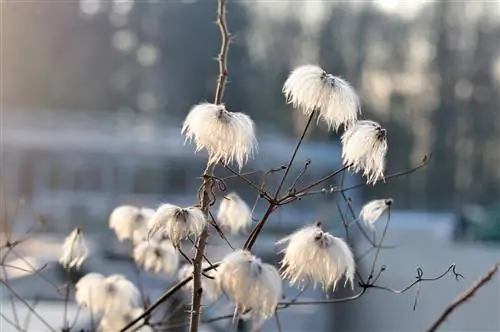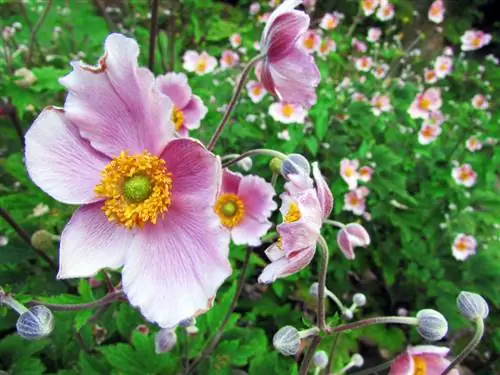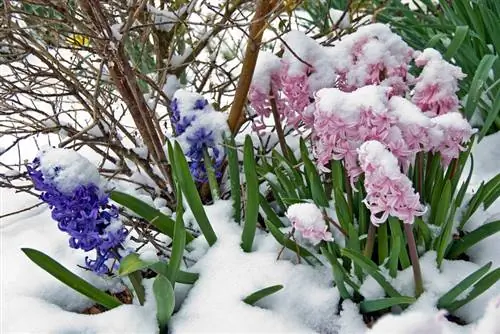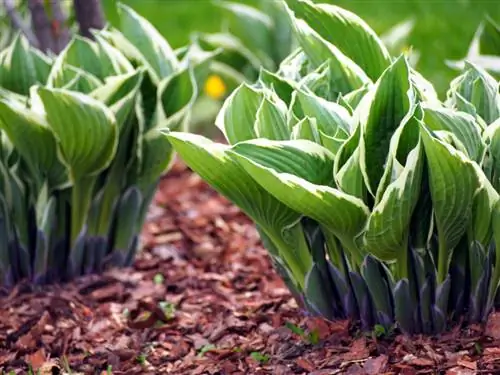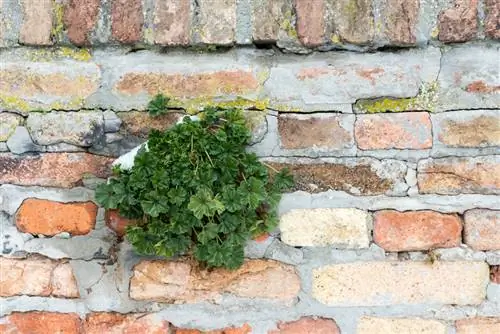- Author admin [email protected].
- Public 2023-12-16 16:46.
- Last modified 2025-01-23 11:22.
With over 200 different species, clematis or clematis is widespread in all temperate zones on earth. Most of these popular garden plants with larger flowers come from Japan and China, but there are also native varieties. This is how you overwinter the different species properly.
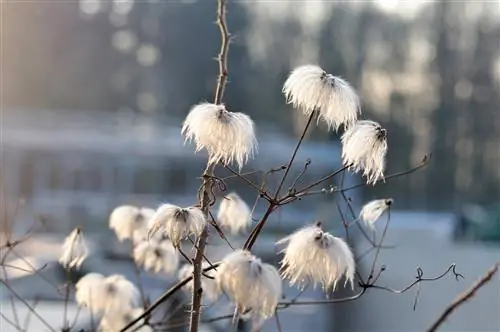
How can you overwinter the clematis?
In fact, special overwintering of clematis is not necessary, as most of the species and varieties in our country arehardy. This applies especially to the native clematis as well as the forms native to mountains such as the alpine clematis or the mountain clematis from the Himalayas. Onlysome exotic varietiesshould overwinter frost-free or receive good winter protection as they are somewhat more sensitive. This also applies togrown specimens, as they are more at risk from frost.
Can you overwinter clematis outside?
Most clematis can be safelyoverwintered outdoorsbecause they are hardy or can survive the cold if provided with a certain amount of winter protection. Mountain species such as thenative Alpine clematis(Clematis alpina), of which there are numerous popular cultivars, are considered to be particularly frost-resistant. TheMountain Clematis(Clematis montana) is also considered extremely robust and hardy. Here you can also choose from many beautiful varieties. Furthermore, thecommon clematis (Clematis vitalba) is considered to be very hardy.
Which clematis is better to overwinter frost-free?
However, you should overwinter these clematis frost-free or at least provide them with good winter protection:
- Clematis florida
- many evergreen species like Clematis armandii
Despite its name, the delicateClematis floridacomes from Japan and China and prefers to grow on warm walls. If possible, it should be cultivated in pots and overwintered frost-free. TheClematis armandii, which also comes from China, is relatively hardy, but needs a sheltered and sunny location
Where and how can you overwinter clematis?
Planted clematis overwinter bestoutdoorsand, if they are partially hardy or young plants, receivewinter protection:
- cut back sensitive species
- Cover the root area with a thick layer of brushwood, leaves and straw
- Wrap woody tendrils in reed mats (€96.00 on Amazon), jute or fleece
Young clematis should always receive winter protection in winter, even the species that are considered very frost-hardy. Clematis in a pot, on the other hand, is better placed in a bright and frost-free place in the basement or in the stairwell.
How much frost can the different types of clematis tolerate?
How you overwinter the clematis also depends on the specific frost sensitivity of the respective species. Basically, therule of thumbis that clematis are more robust andless sensitiveto sub-zero temperatures,the earlier they bloom and the smaller their flowersare. Large-flowered species are often more sensitive. In general, for almost all varieties, the above-ground parts of the plant freeze back as soon as the thermometerfalls below minus 8 °C. However, they sprout again the following year.
What else should you consider when overwintering your clematis?
When overwintering your clematis, make sure that theroot area is well protectedfrom persistent frost. As long as the roots remain intact, clematis will continue to sprout. You should also stopfertilizationno later than July so that the shoots have time to mature. This makes them less sensitive to cold. In addition, a goodlocation - well protected from wind and drafts and not too cold - is very important.
Tip
When should you cut back the clematis?
When you cut back the clematis depends on the respective variety. Spring-flowering species should only be pruned after flowering, otherwise you will remove the buds that have already formed. Many varieties that are only partially hardy, however, should be cut to just above the ground either in November or March.

